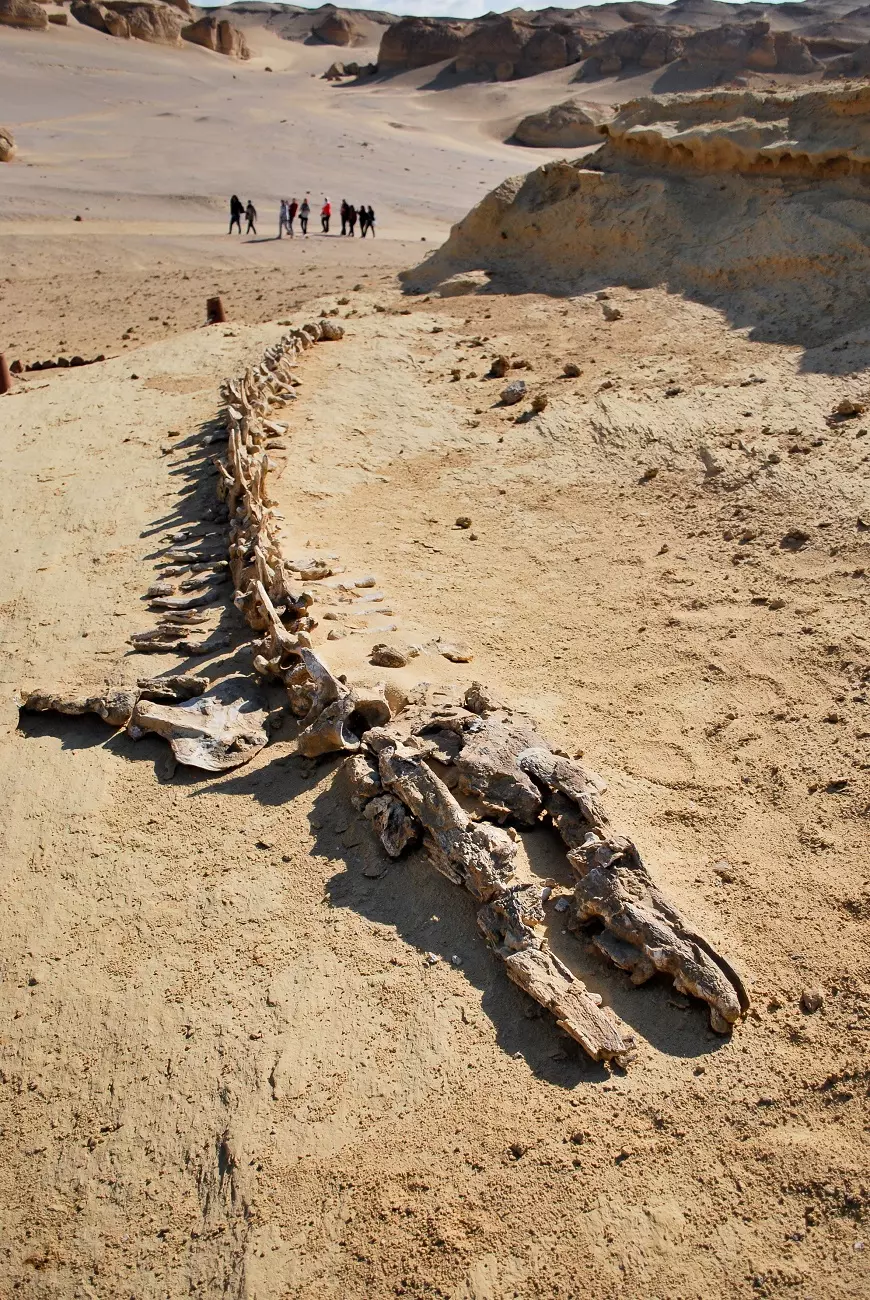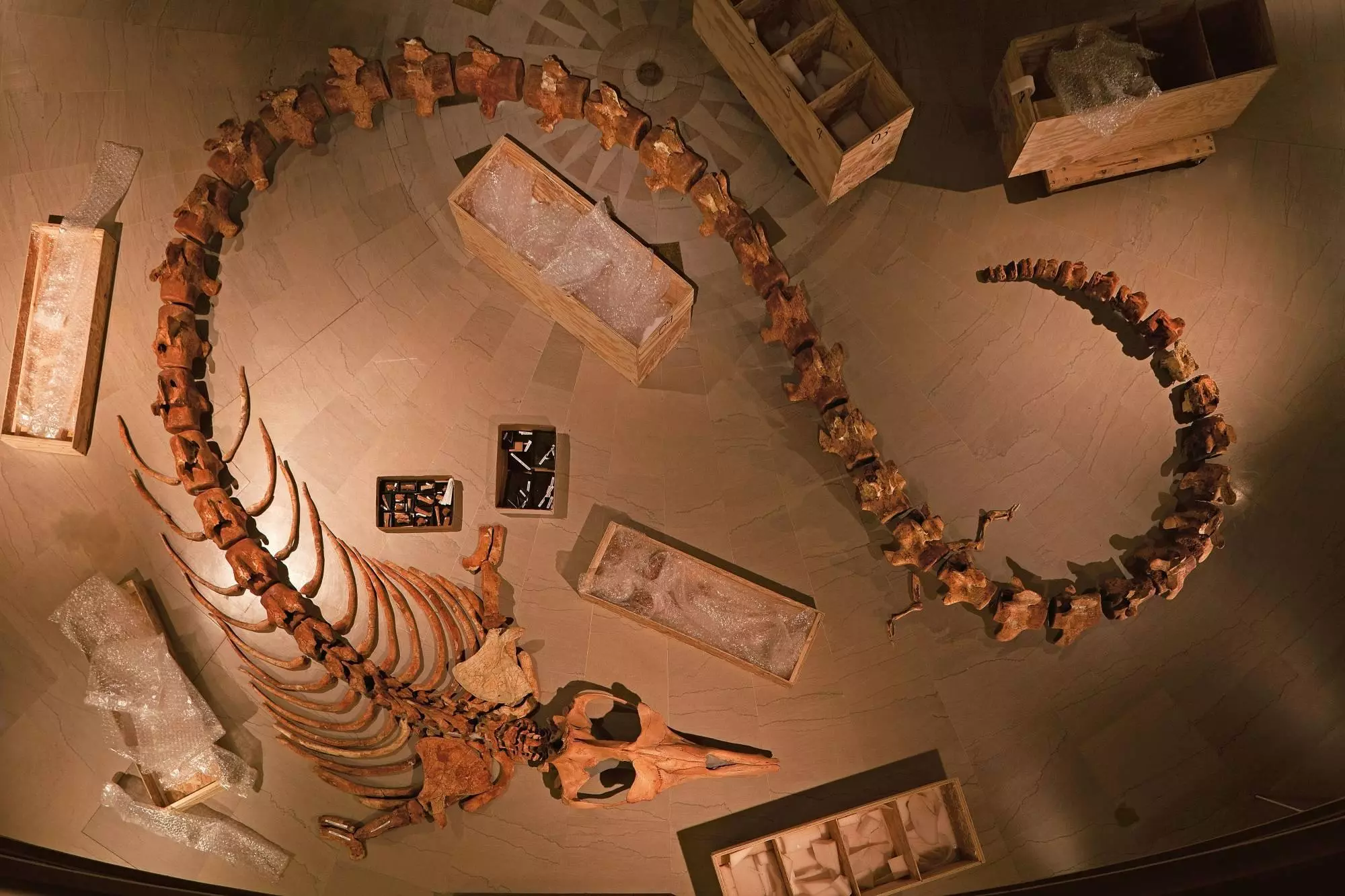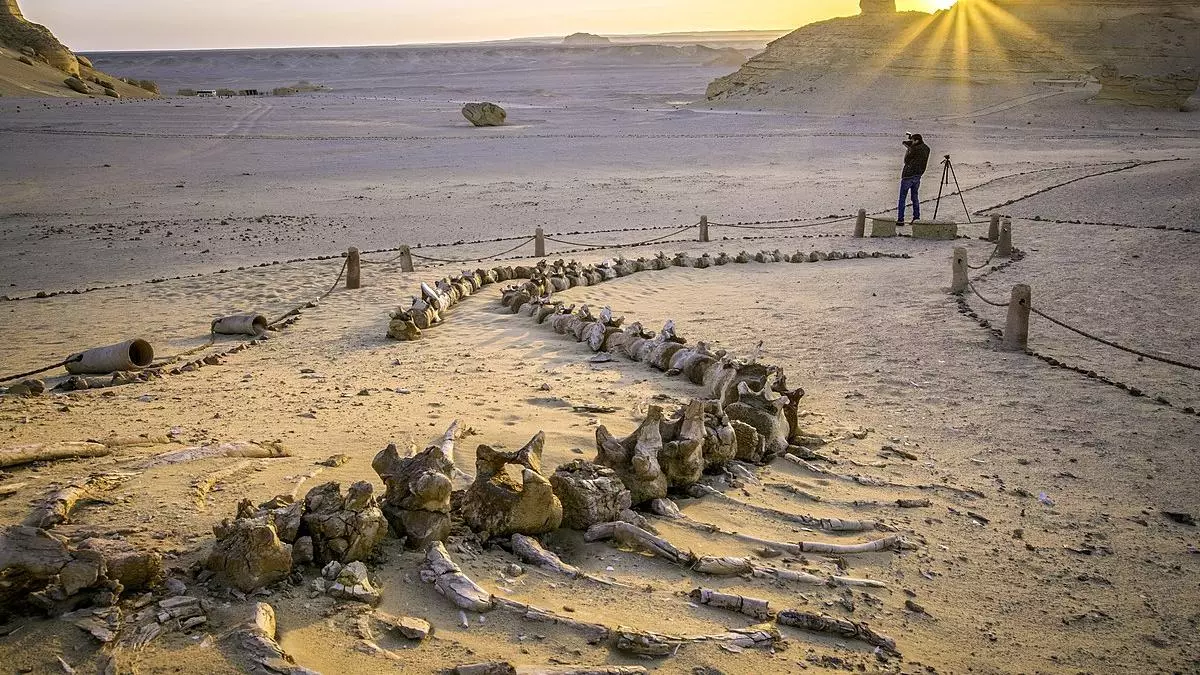There is a veritable open-air museum in the middle of the Egyptian Sahara desert that shows how this sea of sand was once a real ocean where whales swam. The Valley of the Whales is a region full of ancient skeletons of these enormous animals, some of which are so early in the evolutionary process that they still have legs and toes.
These skeletons, as well as other marine fossils found in this area, date back to the late Eocene epoch (55.8 to 33.9 million years ago), when present-day Egypt was submerged under the Tethys Ocean and whales had just evolved into marine creatures, according to UNESCO.
‘These fossils represent one of the most important stories in evolution: the emergence of the whale as an ocean mammal from a previous life as a land animal,’ adds the UNESCO website.

Wadi al Hitan (which in Arabic means Valley of the Whales) is a place shrouded in all kinds of legends and an aura of mystery. The locals show respect and caution towards this desert, where the remains of an impressive number of these ancient animals lie. So far, palaeontologists have unearthed more than 400 ancient whale skeletons in this desert valley since the early 20th century.
Whales that ate whales
It all began in the early 20th century. The first discovery took place in 1902, when a previously unknown species of whale called Basilosaurus isis (formerly Zeuglodon isis) was unearthed. This animal was up to 18 metres long and apparently fed on smaller whales, crushing their skulls before swallowing them, according to a 2019 study.
According to scientists, B. isis ‘had a long snout and was armed with pointed incisors and sharp teeth in its cheeks,’ says Manja Voss, a marine mammal expert at the Berlin Museum of Natural History and lead author of the 2019 study.
Whale with legs on its limbs discovered
Researchers have found dozens of B. isis skeletons in the Valley of the Whales, but in 1989, palaeontologists made a discovery that went much further. when a team from the University of Michigan (USA) and the Egyptian Geological Museum unearthed skeletons of this species that still had hind limbs with feet and toes, a vestige of their remote origin, according to a 2023 review article.
Modern whales lack hind limbs, but they still have pelvic bones that prove they did have them in the distant past, according to the University of Hawaii. This means that the fossils in the Valley of the Whales are some of the oldest known archaeocetes, a group of Eocene mammals that later evolved into today’s whales and dolphins.
It was in 2005 that this site received a major boost for its conservation. That year, palaeontologists discovered a nearly complete skeleton of B. isis in an exceptional state of preservation, leading UNESCO to declare the Whale Valley a World Heritage Site.
Since then, many more fossils have been found, including remains of ancient Eocene turtles, bony fish, sharks, rays, crocodiles, sea cows and molluscs.

Despite being an open-air museum with a visitor centre for tourists and easy access, the Valley of the Whales is under strict protection. For now, researchers continue to discover new fossils and deepen their geological knowledge of the site.

